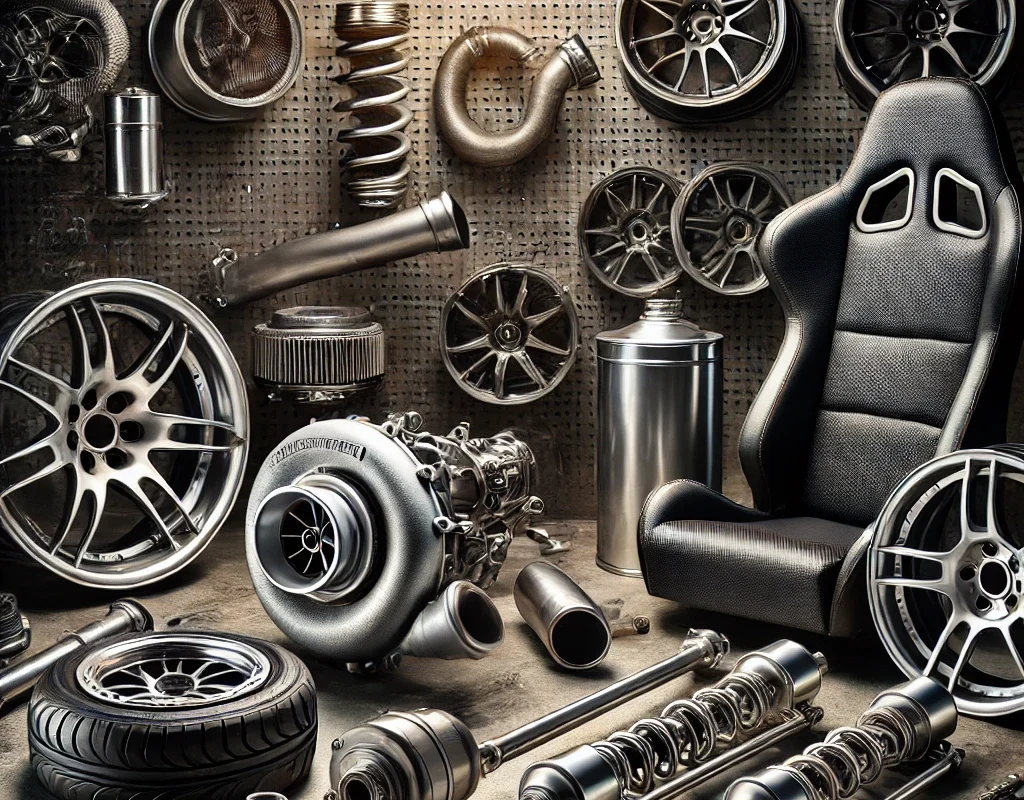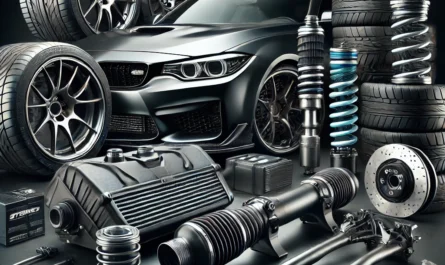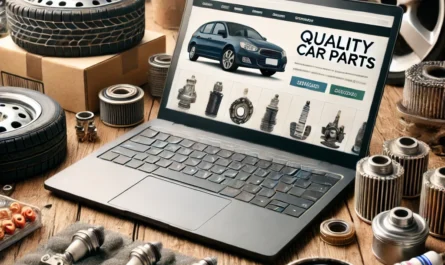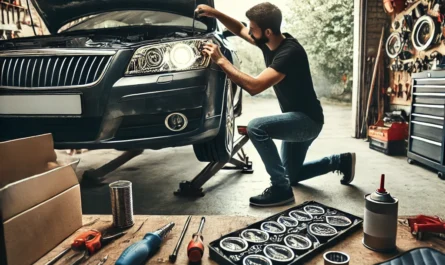When it comes to upgrading a vehicle for better performance, choosing the right parts is a crucial step that can either enhance your car’s speed, handling, and efficiency—or make it worse. Whether you’re a seasoned enthusiast or a beginner, making informed decisions about which parts to upgrade is essential for reaching your performance goals.
Introduction
The world of performance car upgrades is vast, with a seemingly endless array of parts to choose from. From turbochargers to suspension kits, finding the right components requires a careful blend of technical understanding and practical knowledge. There are also important factors to consider, such as compatibility with your vehicle, your performance objectives, and, of course, budget constraints. In this article, we will explore how to choose the best car parts for performance upgrades, providing insights to help you make the right choices and boost your car’s performance without compromising on safety or reliability.
Best Car Parts for Performance Upgrades
Selecting the best car parts for performance upgrades involves knowing which areas of the car will give you the best improvement and are worth your investment. Whether you’re focusing on power, handling, or aesthetics, it’s crucial to understand how different components work together to boost overall performance.
Understanding Your Performance Goals
Before choosing any performance part, you must first identify your specific goals. Are you looking to enhance your car’s acceleration? Or maybe improve its handling around corners? Perhaps you want to focus on aesthetics without compromising drivability. Knowing your primary objective will guide you toward the right upgrades, as the choice of components for track performance can be very different from those chosen for street driving.
For instance, those seeking greater power may look into engine upgrades like forced induction systems, while drivers who prioritize handling will focus on suspension and braking systems.
Engine Performance Upgrades
Cold Air Intakes
One of the simplest and most popular performance upgrades is installing a cold air intake system. These systems allow the engine to draw in cooler, denser air, which can increase horsepower and improve throttle response. Cold air intakes are relatively affordable and provide noticeable gains in engine performance, especially for naturally aspirated engines.
Exhaust Systems
An upgraded exhaust system can significantly enhance your car’s horsepower by allowing it to expel gases more efficiently. High-performance exhaust systems reduce backpressure and improve engine airflow, leading to a boost in power and a more aggressive sound.
When choosing an exhaust system, pay attention to the materials used (stainless steel is durable and resistant to corrosion) and whether the system is designed for performance rather than just aesthetics.
Turbochargers and Superchargers
For those looking to make major power gains, forced induction systems like turbochargers or superchargers are the go-to upgrades. A turbocharger uses exhaust gases to spin a turbine, forcing more air into the engine and producing significant horsepower increases. A supercharger, on the other hand, is belt-driven and provides instant power without the lag typically associated with turbochargers.
These are more complex upgrades that usually require additional modifications, such as a tune and strengthened internal engine components, to handle the increased power.
Transmission and Drivetrain Upgrades
Performance Clutches
If you’re adding more power to your car, upgrading the clutch is a must. A stock clutch may not be able to handle the increased torque, leading to slipping or premature wear. A performance clutch is designed to manage higher power levels and provide better engagement, ensuring that all of the additional horsepower is transferred to the wheels effectively.
Limited Slip Differentials (LSD)
A limited-slip differential improves traction by allowing both wheels on an axle to spin at the same rate, even when one has more grip than the other. This upgrade is especially beneficial for performance driving, as it prevents the loss of power to a wheel that is slipping, thus improving acceleration and cornering.
Suspension Upgrades
Coilovers
Upgrading your suspension is key to improving your car’s handling, and coilovers are a popular choice for this. Coilovers allow for adjustable ride height and dampening, which means you can fine-tune your car’s handling characteristics to your specific needs, whether for daily driving or track days.
Sway Bars
Sway bars (or anti-roll bars) help reduce body roll when cornering by stiffening the car’s suspension. This leads to more precise handling and increased stability, especially during aggressive driving.
When choosing sway bars, it’s important to balance them front to rear to avoid creating too much understeer or oversteer, both of which can negatively affect handling.
Braking System Upgrades
Performance Brake Pads and Rotors
When you add power to your car, you need to ensure it can stop effectively. Upgrading to high-performance brake pads and rotors will improve stopping power and reduce brake fade during high-stress situations, such as aggressive driving or track days.
Brake pads come in different compounds—ceramic, semi-metallic, and organic—each offering various benefits in terms of longevity, heat resistance, and noise reduction. Upgraded rotors, particularly slotted or drilled, help dissipate heat and improve brake cooling.
Brake Calipers
Upgrading your brake calipers can also enhance your car’s braking performance. Larger, multi-piston calipers provide more consistent and stronger braking force compared to stock single-piston calipers. This upgrade is especially important for vehicles used in racing or high-performance environments.
Wheels and Tires
Performance Tires
Tires are arguably the most important part of any performance upgrade, as they are the only part of the car that actually touches the road. Upgrading to high-performance tires can significantly improve your car’s grip, handling, and overall performance. For those driving in different conditions, it’s important to choose the right tires—whether they are summer, all-season, or track-specific tires.
When selecting performance tires, consider the tread pattern, rubber compound, and sidewall stiffness, as these factors directly influence how the car responds during aggressive driving.
Lightweight Wheels
Switching to lightweight wheels can reduce unsprung weight, which positively affects a car’s acceleration, braking, and handling. Lighter wheels allow the suspension to respond more quickly to changes in road conditions, which improves ride quality and performance. It’s important to select wheels that are not only light but also strong enough to withstand the demands of performance driving.
Aerodynamic Upgrades
Spoilers and Wings
Aerodynamic modifications, such as spoilers and wings, can improve a car’s stability at higher speeds by increasing downforce, which keeps the tires planted to the road. This is particularly useful for track cars that regularly reach high speeds, but can also benefit street cars by improving overall handling.
Front Splitters and Rear Diffusers
Front splitters and rear diffusers manage the airflow around the car, reducing drag and improving downforce. These upgrades can be beneficial not just for performance but also for fuel efficiency. When choosing aerodynamic parts, make sure they are properly designed for your car’s specific model, as improper installation or fitment can have the opposite effect.
Interior Performance Upgrades
Racing Seats
While upgrading the interior might not seem like it directly affects performance, installing racing seats can improve your driving experience by keeping you secure during high-speed maneuvers. Racing seats are designed to offer more support than stock seats, which helps keep the driver in place during aggressive driving.
Steering Wheels
A performance-oriented steering wheel can provide better grip and control, giving the driver more confidence during spirited driving. Many aftermarket steering wheels also allow for customization in terms of diameter and material, which can be tailored to your driving style and needs.
You can also read; Top 10 Must-Have Car Accessories for Comfort and Convenience
Electrical and ECU Tuning Upgrades
ECU Remapping
ECU tuning or remapping is one of the most effective ways to extract more power from your car’s engine. By adjusting the engine control unit’s (ECU) parameters, you can optimize fuel delivery, ignition timing, and boost levels to increase horsepower and torque.
Most modern cars come with conservative ECU settings to ensure reliability under a variety of conditions. With a proper tune, you can unlock more performance, especially after installing modifications like turbochargers or exhaust systems.
Performance Chips
Performance chips are another way to adjust the car’s ECU settings, though they typically offer fewer customization options compared to a full remap. However, they are a quick and easy way to improve performance, especially for vehicles with minimal modifications.



